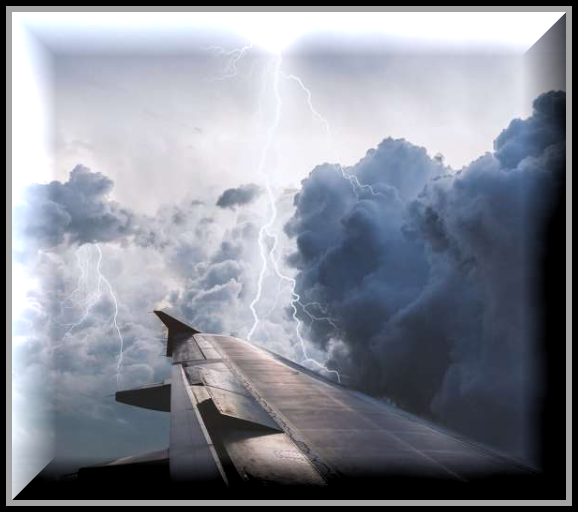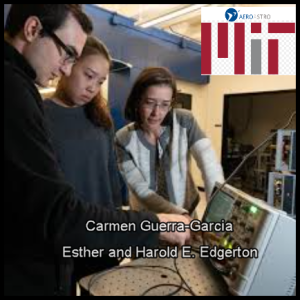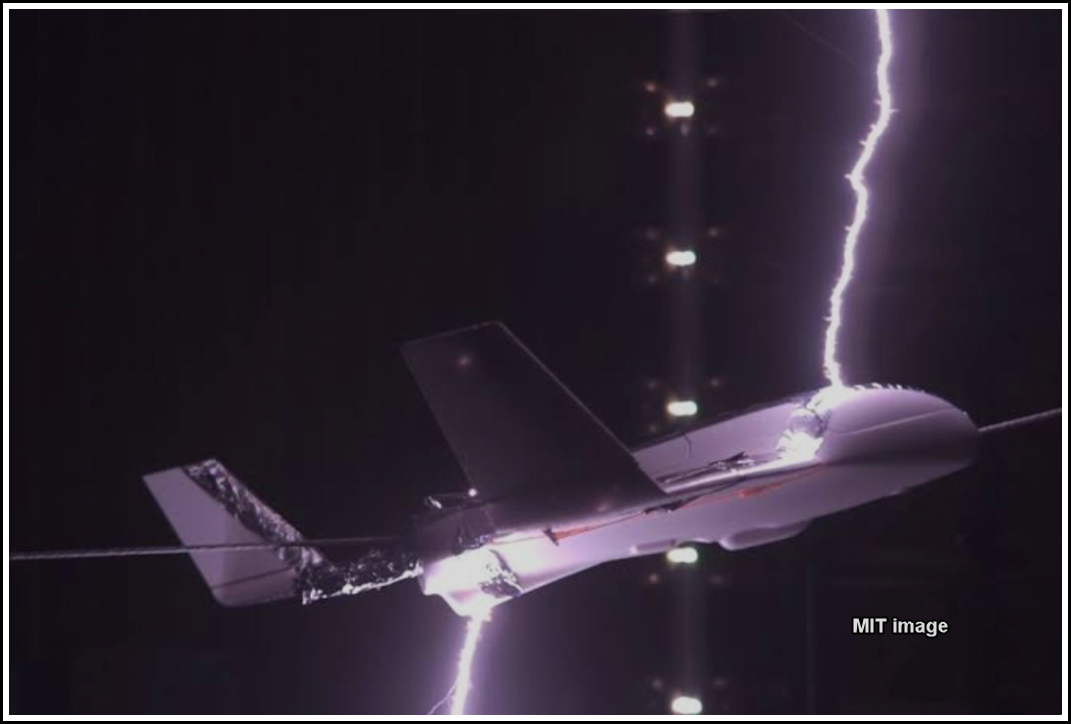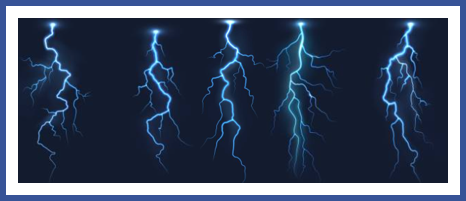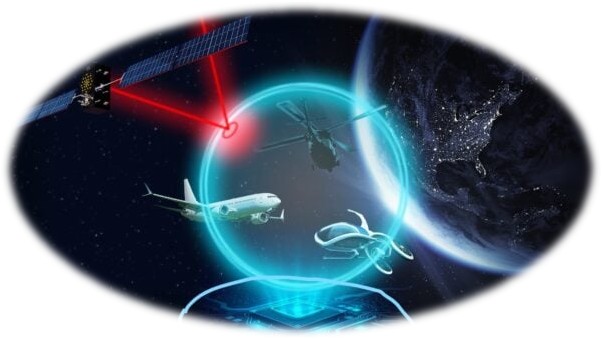“Ain’t Technology Great???”,fixing bumps
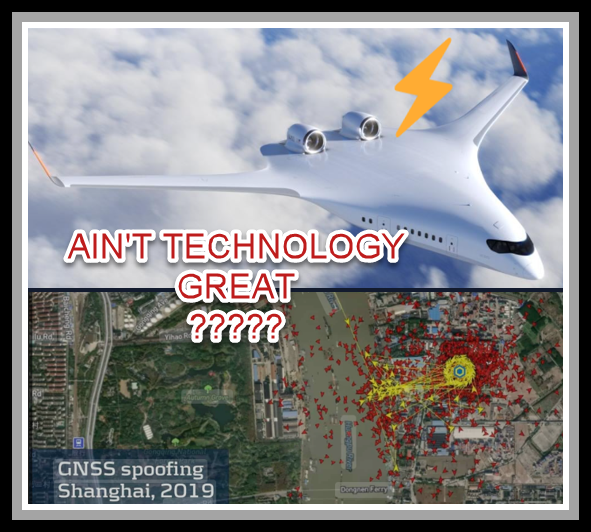
Two unrelated developments in aerospace – unexpected risks for new aircraft bodies (MIT is working on the answer) and Spoofing of GNSS signals (the team of CMC Electronics and École de Technologie Supérieure (ÉTS) assignment)—have problems that must be solved in order to make these important bits of innovation feasible.
Thus, the above quote-Ain’t technology great??? Each advance dazzles us with convenience, speed, and innovation—but every leap forward seems to bring a new set of headaches. From GPS spoofing to AI hallucinations, the very systems designed to help us can sometimes mislead us
As author Paul Virilio once said, “When you invent the ship, you also invent the shipwreck.” Progress doesn’t come without turbulence—it just changes the shape of the storm.
The tales of the work of researchers is both encouraging and impressive. Read their stories!!!
Lightning-prediction tool could help protect the planes of the future
by Jennifer Chu, Massachusetts Institute of Technology
edited by Lisa Lock, reviewed by Andrew Zinin
Credit: Pixabay/CC0 Public Domain
More than 70 aircraft are struck by lightning every day. If you happen to be flying when a strike occurs, chances are you won’t feel a thing, thanks to lightning protection measures that are embedded in key zones throughout the aircraft.
Lightning protection systems work well, largely because they are designed for planes with a “tube-and-wing” structure, a simple geometry common to most aircraft today. But future airplanes may not look and fly the same way. The aviation industry is exploring new designs, including blended-wing bodies and truss-braced wings, partly to reduce fuel and weight costs.
But researchers don’t yet know how these unconventional designs might respond to lightning strikes.
MIT AEROSPACE ENGINEERS are hoping to change that with a new physics-based approach that predicts how lightning would sweep across a plane with any design. The tool then generates a zoning map highlighting sections of an aircraft that would require various degrees of lightning protection, given how likely they are to experience a strike.
“People are starting to conceive aircraft that look very different from what we’re used to, and we can’t apply exactly what we know from historical data to these new configurations because they’re just too different,” says Carmen Guerra-Garcia, associate professor of aeronautics and astronautics (AeroAstro) at MIT. “Physics-based methods are universal. They’re agnostic to the type of geometry or vehicle. This is the path forward to be able to do this lightning zoning and protect future aircraft.”
She and her colleagues report their results in a study published this week in IEEE Access. The study’s first author is AeroAstro graduate student Nathanael Jenkins. Other co-authors include Louisa Michael and Benjamin Westin of Boeing Research and Technology.
First strike
When lightning strikes, it first attaches to a part of a plane—typically a sharp edge or extremity—and hangs on for up to a second. During this brief flash, the plane continues speeding through the air, causing the lightning current to “sweep” over parts of its surface, potentially changing in intensity and re-attaching at certain points where the intense current flow could damage vulnerable sections of an aircraft.
In previous work, Guerra-Garcia’s group developed a model to predict the parts of a plane where lightning is most likely to first connect. That work, led by graduate student Sam Austin, established a starting point for the team’s new work, which aims to predict how and where the lightning will then sweep over the plane’s surface. The team next converted their lightning sweep predictions into zoning maps to identify vulnerable regions requiring certain levels of protection.
Stages involved in physics-based aircraft lightning zoning: (top left) computational electrostatics, (top right) computational fluid dynamics, (mid left) initial attachment simulation, (mid right) swept stroke simulation, (bottom) zoning mapping. Credit: Nathanael Jenkins
A typical tube-and-wing plane is divided into three main zones, as classified by the aviation industry. Each zone has a clear description of the level of current it must withstand in order to be certified for flight. Parts of a plane that are more likely to be hit by lightning are generally classified as zone 1 and require more protection, which can include embedded metal foil in the skin of the airplane that conducts away a lightning current.
To date, an airplane’s lightning zones have been determined over many years of flight inspections after lightning strikes and fine-tuning of protection measures. Guerra-Garcia and her colleagues looked to DEVELOP A ZONING APPROACH BASED ON PHYSICS, RATHER THAN HISTORICAL FLIGHT DATA. Such a physics-based mapping could be applied to any shape of aircraft, such as unconventional and largely untested designs, to identify regions that really require reinforcement.
“Protecting aircraft from lightning is heavy,” Jenkins says. “Embedding copper mesh or foil throughout an aircraft is an added weight penalty. And if we had the greatest level of protection for every part of the plane’s surface, the plane would weigh far too much. So zoning is about trying to optimize the weight of the system while also having it be as safe as possible.”
In the zone
For their new approach, the team developed a model to predict the pattern of LIGHTNING SWEEP and the corresponding LIGHTNING PROTECTION ZONES, for a given airplane geometry. Starting with a specific airplane shape—in their case, a typical tube-and-wing structure—the researchers simulated the fluid dynamics, or how air would flow around a plane, given a certain speed, altitude, and pitch angle. They also incorporated their previous model that predicts the places where lightning is more likely to initially attach.
For each initial attachment point, the team simulated tens of thousands of potential lightning arcs, or angles from which the current strikes the plane. They then ran the model forward to predict how the tens of thousands of potential strikes would follow the air flow across the plane’s surface. These runs produced a statistical representation of where lightning, striking a specific point on a plane, is likely to flow and potentially cause damage. The team converted this statistical representation into a map of zones of varying vulnerability.
They validated the method on a conventional tube-and-wing structure, showing that the zoning maps generated by the physics-based approach were consistent with what the aviation industry has determined over decades of fine-tuning.
“We now have a physics-based tool that provides some metrics like the probability of lightning attachment and dwell time, which is how long an arc will linger at a specific point,” Guerra-Garcia explains. “We convert those physics metrics into zoning maps to show, if I’m in this red region, the lightning arc will stay for a long time, so that region needs to be heavily protected.”
THE TEAM IS STARTING TO APPLY THE APPROACH TO NEW GEOMETRIES, SUCH AS BLENDED-WING DESIGNS AND TRUSS-BRACED STRUCTURES. The researchers envision that the tool can help designers incorporate safe and efficient lightning-protection systems early on in the design process.
“Lightning is incredible and terrifying at the same time, and I have full confidence in flying on planes at the moment,” Jenkins says. “I want to have that same confidence in 20 years’ time. So, we need a new way to zone aircraft.”
“With physics-based methods like the ones developed with Professor Guerra-Garcia’s group, we have the opportunity to shape industry standards and as an industry rely on the underlying physics to develop guidelines for aircraft certification through simulation,” says co-author Louisa Michael of Boeing Technology Innovation. Currently, we are engaging with industrial committees to propose these methods to be included in Aerospace Recommended Practices.”
“Zoning unconventional aircraft is not an easy task,” adds co-author Ben Westin of Boeing Technology Innovation. “But these methods will allow us to confidently identify which threat levels each part of the aircraft needs to be protected against and certified for, and they give our design engineers a platform to do their best work to optimize aircraft design.”
Beyond airplanes, Guerra-Garcia is looking at ways to adapt the lightning protection model to other technologies, including wind turbines.
“About 60% of blade losses are due to lightning and will become worse as we move offshore because wind turbines will be even bigger and more susceptible to upward lightning,” she says. “They have many of the same challenges of a flowing gas environment. It’s more complex, and we will apply this same sort of methodology to this space.”
More information: Nathanael A. Jenkins et al, A Physics-Based Approach to Aircraft Lightning Zoning: Zone 2, IEEE Access (2025). DOI: 10.1109/access.2025.3628197
Journal information: IEEE Access
CMC Electronics and ÉTS launch major research chair in resilient aviation navigation
October 1, 2025 – By Tracy Cozzens
CMC Electronics is partnering with ÉTS to create the CMC Electronics Industrial Research Chair in Resilient GNSS Navigation. (Image: CNW Group/CMC Electronics)
A five-year research and development program has been launched to enhance GNSS navigation for aviation, encompassing security, integrity and spoofing resilience.
CMC Electronics is partnering with École de Technologie Supérieure (ÉTS) in Quebec, Canada, to create the CMC Electronics Industrial Research Chair in Resilient GNSS Navigation. The five-year chair, valued at more than $6 million, unites CMC’s avionics expertise, led by John Studenny, internationally recognized GNSS navigation expert and standards contributor, with ÉTS’s renowned LASSENA laboratory under René Jr. Landry, an expert in aerospace navigation and cybersecurity.
The chair will tackle critical threats to GNSS navigation for aviation, including jamming and spoofing. CMC and ETS aim to DEVELOP SPOOFING-RESILIENT GNSS RECEIVERS capable of real-time detection, mitigation and total recovery from spoofing attacks, setting a benchmark in aviation safety and integrity.
Research focus areas
The chair’s work spans several integrated areas that target key GNSS security challenges:
- integration of spoofing detection algorithms
- spoofing resilience grading and stress testing frameworks
- recovery mechanisms and certification benchmarking
- advanced integrity algorithms (ARAIM)
- sensor fusion and authentication technologies for spoofing mitigation
- end-to-end spoofing-resilient GNSS prototype
- next-generation inertial sensors with built-in integrity
Together, these areas aim to produce operational, spoofing-resilient GNSS systems suitable for aviation environments.
Broader impact and strategic alignment
THE CHAIR WILL TRAIN MORE THAN 65 HIGHLY QUALIFIED PERSONNEL (HQPS) and promote equity, diversity and inclusion in engineering. It supports initiatives to increase women’s representation and aligns with ÉTS’s strategic research fields in aerospace, cybersecurity, sensors and intelligent autonomous systems.
CMC Electronics is co-leading the research program and industrial deployment, ensuring that the outcomes are fast-tracked toward secure, export-ready GNSS solutions. Safran Trusted 4D contributes specialized expertise, and Jaunt Air Mobility provides operational insights for flight testing and system integration.


